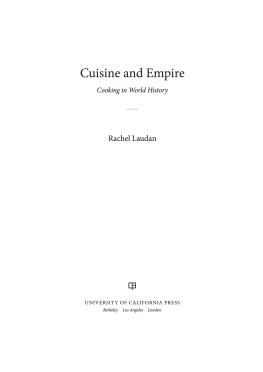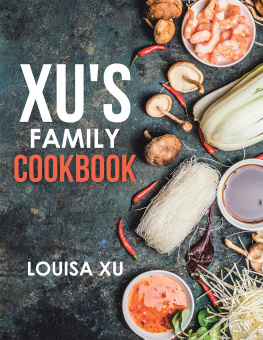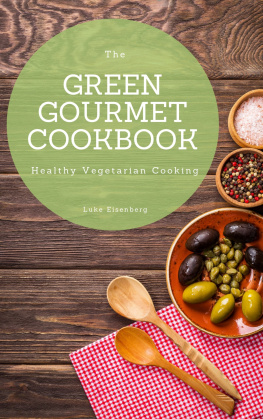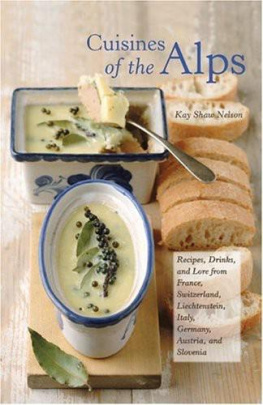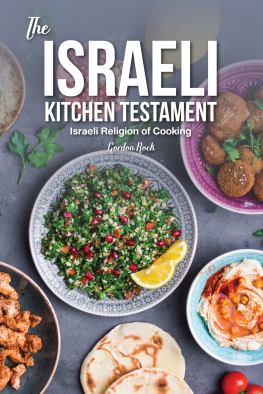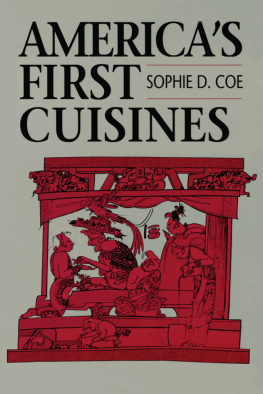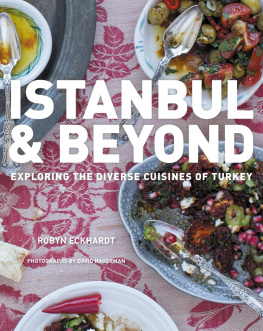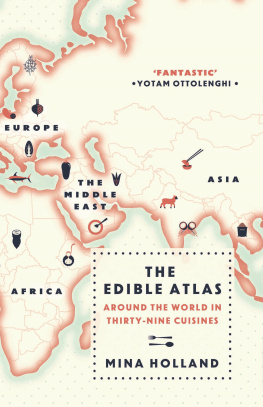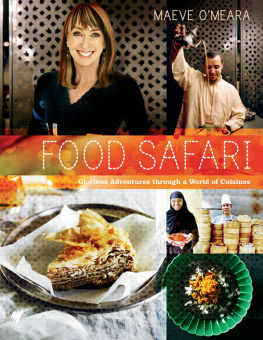
CALIFORNIA STUDIES IN FOOD AND CULTURE
Darra Goldstein, Editor
Cuisine and Empire
The publisher gratefully acknowledges the generous support of the Ahmanson Foundation Humanities Endowment Fund of the University of California Press Foundation.
The publisher also gratefully acknowledges the generous support of the Humanities Endowment Fund of the University of California Press Foundation.
Cuisine and Empire
Cooking in World History
Rachel Laudan

UNIVERSITY OF CALIFORNIA PRESS
BerkeleyLos AngelesLondon
University of California Press, one of the most distinguished university presses in the United States, enriches lives around the world by advancing scholarship in the humanities, social sciences, and natural sciences. Its activities are supported by the UC Press Foundation and by philanthropic contributions from individuals and institutions. For more information, visit www.ucpress.edu.
University of California Press
Berkeley and Los Angeles, California
University of California Press, Ltd.
London, England
2013 by Rachel Laudan
Library of Congress Cataloging-in-Publication Data
Laudan, Rachel, 1944
Cuisine and empire : cooking in world history / Rachel Laudan.
p.cm. (California studies in food and culture ; 43)
Includes bibliographical references and index.
ISBN 978-0-520-26645-2 (cloth : alk. paper)
eISBN 9780520954915
1. CookingHistory.2. Food habitsHistory.3. FoodSocial aspects.I. Title.II. Series: California studies in food and culture ; 43.
TX645.L3252013
641.5dc232012038609
Manufactured in the United States of America
22 21 20 19 18 17 16 15 14 13
10 9 8 7 6 5 4 3 2 1
In keeping with a commitment to support environmentally responsible and sustainable printing practices, UC Press has printed this book on Natures Natural, a fiber that contains 30% post-consumer waste and meets the minimum requirements of ANSI/NISO Z 39.481992 ( R 1997) ( Permanence of Paper ).
For my father, who farmed
For my mother, who cooked
And for Larry, who listened
CONTENTS
ILLUSTRATIONS
FIGURES
MAPS
TABLES
ACKNOWLEDGMENTS
One of the secret pleasures that an author has, particularly with a book as sweeping as this, is that every page of the manuscript brings back memories. One sentence was inspired by a conversation with a friend, another by comments on a paper given at a conference, and yet another by a letter or posting on a web site. Of course this makes giving adequate acknowledgments utterly impossible. So please, my friends, realize that the brief list of names given here does not mean that you are forgotten or that our encounters did not matter. Quite the contrary. They are woven into this book, perhaps in ways that you might never have expected, but that is my responsibility, not yours.
Even so, some very special thanks are due. For early encouragement to plunge into food history, I am grateful to Elizabeth Andoh, Sonia Corcuera de Mancera, Alan Davidson, Betty Fussell, Barbara Haber, Jan Longone, Jackie Newman, Sandy Oliver, Ray Sokolov, Joyce Toomre, and Barbara Wheaton; for an early immersion in European social history, Peter Stearns; for conversations about world history, Jerry Bentley and Philip Curtin; for sending materials, Alice Arndt, Cathleen Baird, and Katy Biggs; for camaraderie and encouragement, Ken Albala, Naomi Duguid, Anne Mendelson, and Cara De Silva; for teaching me about grinding, Maria de Jsus Cabrera Parra, Margarita Muoz Ramrez, and Alta Gracia and Lourdes Torres Snchez; for insight into grindstones, Rafael Hernndez Laguna, Manuel Olade, and the other metateros of Comonfort, Mexico; for answering one question after another about early Egyptian methods of making bread and beer and processing grains, Mark Nesbitt and Delwen Samuel; and for reading and commenting on early drafts, often in forms so primitive that I blush, Ruth Alegria, E.N. Anderson, Adam Balic, Cindy Bertelson, Anne Bramley, Paul Buell, Sun-ki Chai, Kyri Claflin, Sarah Bak-Geller Corona, Kay Curtis, Diana de Treville, Julie Favella, Glenn Mack, Kelly OLeary, Amber OConnor, Sandy Oliver, Mary Margaret Pack, David Pearson, Charles Perry, Erica Peters, Kate Pollara, Ammini Ramachandran, William Rubel, Ruth Steinberg, Miriam de Uriarte, Merry White, and Jackie Williams. Lissa Caldwell, Barbara Santich, and a third unidentified referee sent lengthy, constructive comments. The Oxford Symposium on Food and Cookery, the Dibner Institute for the History of Science at MIT, the International Association of Culinary Professionals, the Research Chefs Association, the Culinary Historians of New York, Michigan, and Houston, the Institutos de Investigaciones Filosficas and Antropolgicas at the National Autonomous University of Mexico, the Universities of Michigan, Quilmes, Argentina, the University of California at Davis, the University of Texas at Austin, and the Vrije Universiteit, Brussels, gave me the chance to try out some of my ideas. As a freelance scholar I am deeply indebted to the Teresa Lozano Long Institute of Latin American Studies at the University of Texas at Austin, which offered me visiting research positions that made it possible to use the superb Benson Latin American Collection as well as the rest of the University of Texas library system.
Peter Dreyer took on more than would normally have been expected of a copy editor. The entire team at University of California Press, including Darra Goldstein, Sheila Levine, and Kate Marshall, could not have been more patient, professional, and supportive, while Dore Brown went not just one but many extra miles to make the book the best it could be.
Introduction
Cuisine and Empire takes seriously the fact that we are the animals that cook. Human societies, from sometime early in their history, began depending on cooked food, eating raw foods only as a supplement. Cookingturning the raw materials of food, predominantly harvested plants and animal products, into something ediblewas difficult and time-consuming and required enormous amounts of human energy. It was (and is) one of the most important of our technologies, has always provoked analysis and debate, and is interrelated with our social, political, and economic systems, with health and sickness, and with beliefs about ethics and religion. How, Cuisine and Empire asks, has cooking evolved over the past five thousand years?
A large part of the answer, I suggest, can be captured by tracing a sequence of half a dozen major families of cuisine. These styles of cooking expanded one after the other across wide swaths of the earths surface and are still clearly traceable in the worlds culinary geography. Each had its preferred ingredients, techniques, dishes, meals, and ways of eating. Each was shaped by a culinary philosophy that defined what cooking was and how cuisine was related to society, to the natural world (including human bodies), and to the supernatural. Culinary philosophies were always subject to criticism. When those critiques reached a critical point, new cuisines were constructed from elements of the old. Sometimes a new cuisine became adopted as that of a state. Since the states that had the widest reach were empires, this is also the story of the mutual interaction of empires and cuisines, and of how the cuisines of successful states and empires were co-opted or emulated by their neighbors, accounting for their wide dispersion. In their wake followed changes in commerce and in agriculture.
Arching over the history of these cuisines is a broader story. Those that were most successful (in the sense of being consumed by the greatest number of people) three thousand years ago were those based on grains. Because storable grains allowed the accumulation of wealth, the rich and powerful were able to dine on high cuisines while everyone else ate humble cuisines. Because those who ate high cuisines had the money to set up huge kitchens and to fund culinary innovations, high cuisines are the primary focus of Cuisine and Empire. But this book also tells the story of the inequities and hardship caused by this culinary splintering into high and humble cuisines, and of its partial dismantling, at least in the richer parts of the world, over the past two centuries.
Next page
